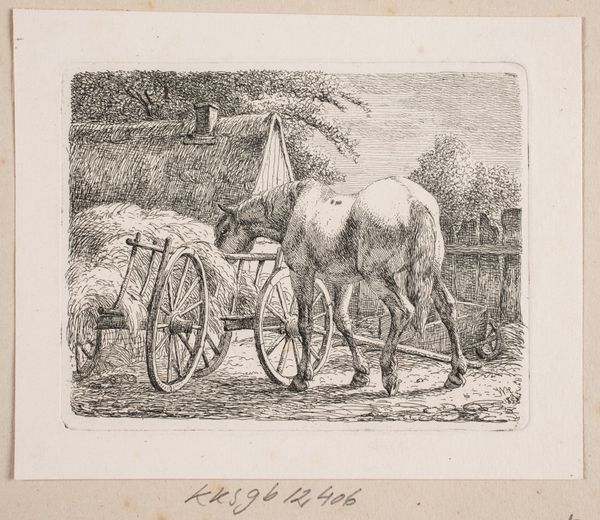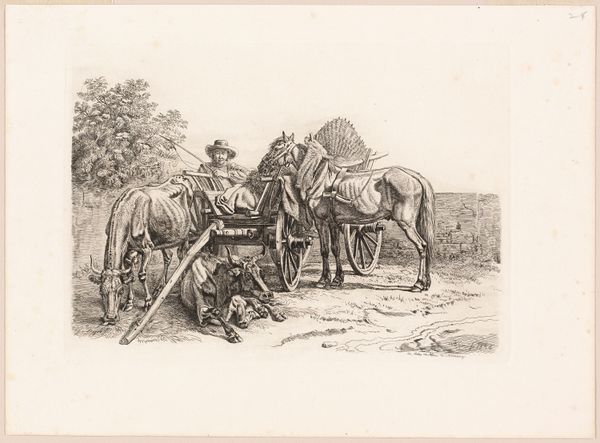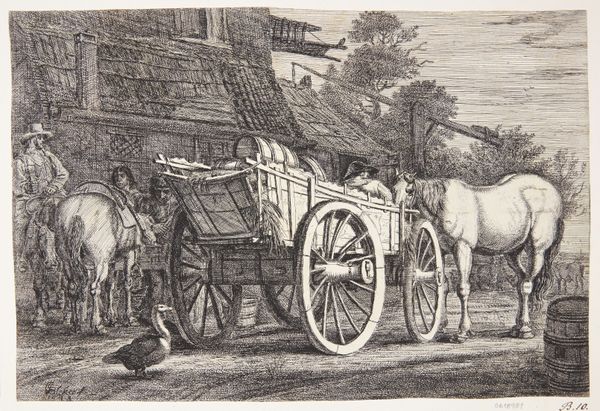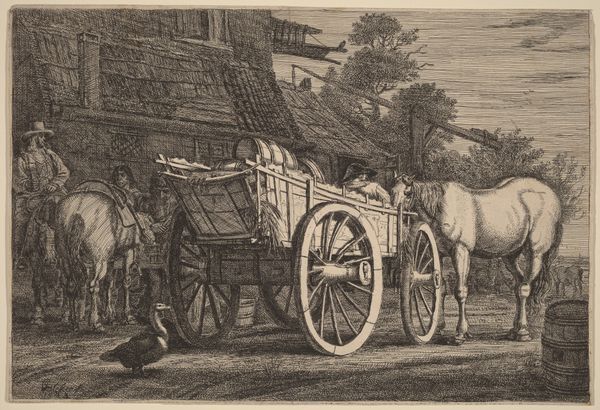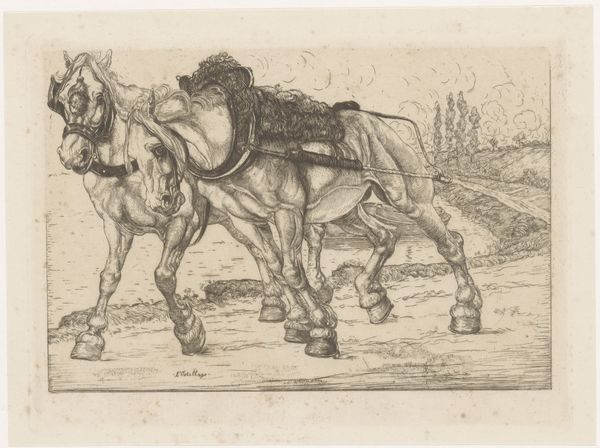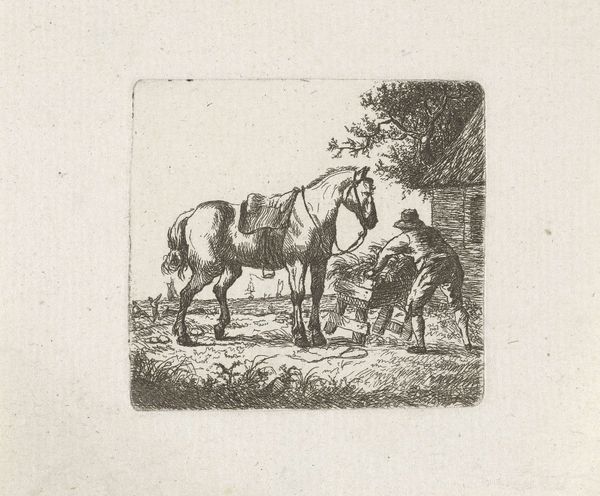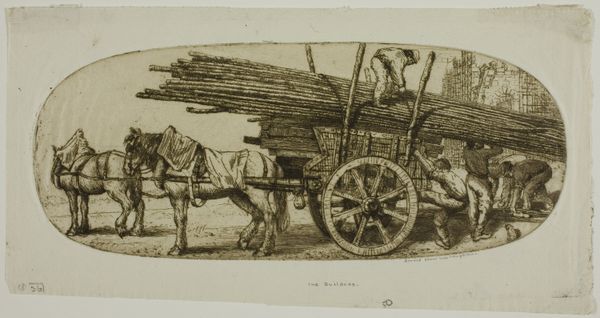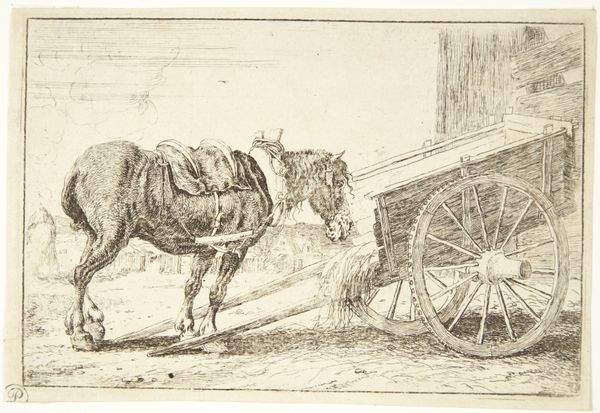
print, engraving
# print
#
landscape
#
genre-painting
#
engraving
#
realism
Dimensions: 78 mm (height) x 100 mm (width) (plademaal)
Curator: Allow me to introduce Johannes Wilhelm Zillen's engraving from 1858, "Et gårdsrum med en ædende hest" – which translates to "A Courtyard with a Feeding Horse". Editor: It strikes me immediately as quite humble and everyday; there is nothing extraordinary in this tranquil depiction of the working horse, only labour. Curator: The image utilizes a complex cross-hatching technique characteristic of engraving. Note the density and direction of the lines—they effectively articulate depth and the play of light, thereby contributing to the naturalism typical of this artwork in the realist style. Editor: And think about the labor involved in creating an engraving like this! It's a slow, meticulous process of incising lines into a metal plate. It brings attention to the very means by which this scene is made visible—through craft. Notice how the thatched roof of the house is emphasized through an apparent messiness; but on the horse itself, we can discern that the hand meticulously made decisions on how to depict its features. It is no coincidence that we get this heightened level of material presence! Curator: It's interesting how Zillen uses the foreground and background to create a sense of depth. The horse is prominently placed, establishing a focal point. We understand the horse to be our central point of focus. Note the framing of the composition; he also does a masterful job drawing out textural details through contrasting sections and highlighting points of interest such as the spokes on the wagon wheel or the hay itself. Editor: Agreed, that textural element reinforces the materiality—both of the artwork and the scene depicted! I am sure he selected each piece specifically with heightened intention. The labor of the farm, the labor of artmaking—the horse works for his fodder, and the artist, presumably, works for his. Curator: Ultimately, Zillen uses relatively simple elements to create a piece that showcases the beauty he finds through observation. Editor: The piece encourages us to consider our relationship to labor, craft, and to the simple dignity of working beings—a fitting piece in the social climate of Denmark, especially, in 1858.
Comments
No comments
Be the first to comment and join the conversation on the ultimate creative platform.
